 Transition finance is one of the most challenging and underdeveloped aspects of climate finance. Finance for companies operating in hard-to-abate sectors, such as steel, cement, chemicals, aviation, and electricity generation, has been limited compared to that for green, sustainable, and sustainability-linked bonds globally. Transition can involve retrofitting existing assets, developing new production technologies (utilizing hydrogen and ammonia), and investing in carbon capture, utilization, and storage (CCUS) technology, but there are considerable uncertainties regarding technological development and the high costs associated with investment.
Transition finance is one of the most challenging and underdeveloped aspects of climate finance. Finance for companies operating in hard-to-abate sectors, such as steel, cement, chemicals, aviation, and electricity generation, has been limited compared to that for green, sustainable, and sustainability-linked bonds globally. Transition can involve retrofitting existing assets, developing new production technologies (utilizing hydrogen and ammonia), and investing in carbon capture, utilization, and storage (CCUS) technology, but there are considerable uncertainties regarding technological development and the high costs associated with investment.
Initiatives to promote transition finance
Several developments are underway to promote credibility and transparency in transition finance (Shirai 2023). First, with regard to the principles and standards related to bond instruments, the International Capital Market Association (ICMA) has enhanced recommendations on disclosure for hard-to-abate sectors, including Scope 3 emissions, using the existing principles applied to green bonds and sustainability-linked bonds (ICMA 2023). The ICMA provides additional disclosure recommendations for hard-to-abate sectors to enhance credibility. Based on these, Japan and the People’s Republic of China (PRC) have been encouraging the use of “transition bonds” as a separate label. Meanwhile, the Climate Bonds Initiative (CBI) has been developing new technical criteria and certification schemes for “aligned” (with 1.5°C pathway) and “transition” labels in relation to debt financing instruments and entities (companies) (CBI 2023). The latter refers to emissions whose targets are not currently aligned with the 1.5°C pathway but are projected to align with it by 2030 as their transition plans make progress.
Second, sectoral decarbonization approaches have been developed based on the carbon budget concept for some, mostly emissions-intensive, sectors. These approaches have been widely used across the globe. The International Energy Agency (IEA) has attempted to provide common emission-level performance thresholds to promote lower-emissions products in hard-to-abate sectors, such as steel and cement (IEA 2022). Some of the approaches focus on alignment or aligning with the 1.5°C pathway. On the other hand, Japan has developed Industry Technology Roadmaps for emissions-intensive sectors to promote transition finance and help hard-to-abate companies develop credible transition plans (METI 2021).
Third, taxonomies are becoming popular as a tool to increase credibility and transparency for investors. Some countries and regions have incorporated transition activities into their taxonomies. Notable examples include the European Union (EU), Singapore, and the Association of Southeast Asian Nations (ASEAN). Singapore and ASEAN’s taxonomies encompass a wide range of transition activities, which are categorized as amber under a traffic-light system (green, amber, and red) that includes “sunset requirements” for transition activities. Sunset requirements refer to the termination of the amber category after a fixed period. These transition activities will be eventually upgraded to a green category if criteria are met, or alternatively downgraded to a red (namely, ineligible or brown) category if not met. Those taxonomies also incorporate early-phase coal power plant retirements (ASEAN Taxonomy Board 2023; Monetary Authority of Singapore 2023).
Fourth, the Glasgow Financial Alliance for Net Zero (GFANZ) Secretariat has provided a definition and criteria for transition finance from the perspective of financial institutions (GFANZ 2023). It focuses on segmenting transition finance portfolios based on four strategies (climate solutions, aligned, aligning, and managed phaseout). This approach includes both hard-to-abate sectors and lower-emissions sectors that have presented 1.5°C aligned emissions reduction pathways or have committed to transitioning in accordance with 1.5°C aligned pathways. It also covers various technologies, services, tools, and social and behavioral changes that directly contribute to the elimination, removal, or reduction of real economy GHG emissions or that directly support the expansion of these solutions. Some investors are concerned about a potential temporary increase in financed emissions arising from financing hard-to-abate sectors. In response, GFANZ has proposed an approach for calculating the expected emissions reduction, and the allocation to financial institutions (required to estimate financed emissions) has also been presented to scale up transition finance.
Challenges related to transition finance
While there are a growing number of approaches to transition activities and transition finance, they differ significantly in terms of the definition of transition finance, the data and target disclosure requirements, the status of alignment or aligning with the 1.5°C pathways, the use of time-bound criteria and thresholds, the requirement of science-based criteria, and sectoral decarbonization approaches.
It remains uncertain whether the world economy will collectively pursue the development of a transition bond (and loans) market with a dedicated “transition” label that will be treated differently from the existing green bonds, sustainable bonds, and sustainability-linked bonds—following the precedents set by Japan and the PRC. Alternatively, it is possible that financial institutions and investors could pursue disclosing transition finance based on the four key transition financing strategies developed by GFANZ in their portfolios without specifying the types of financial instruments (bonds, loans, equity, etc.) and targeted sectors. The former approach primarily concentrates on developing financing instruments tailored to hard-to-abate sectors. In contrast, the latter approach encompasses a broader spectrum of sectors and entities.
The European Union appears to categorize transition finance under existing green bonds or sustainability-linked bonds (European Commission 2023). This may hamper the wider deployment of transition-labeled bonds. Singapore and ASEAN’s taxonomies have not explicitly outlined how their amber classification could be utilized in practice. GFANZ covers green and transition finance. At this stage, there is a high degree of uncertainty regarding which approach will become more dominant over time. This is also reflected in the divergent definitions related to transition finance.
The terms “transition finance” and “transition activities” are attracting increased attention in Asia. The region relies heavily on coal-fired power generation. Consequently, there is a growing need to explore early coal-phaseout possibilities while simultaneously driving decarbonization through the development of new technologies, including CCUS, ammonia, and hydrogen. Concurrently, the region is expected to remain a key hub for global economic development and manufacturing, resulting in increased demand for coal-fired power and hard-to-abate sectors. Therefore, it would be advantageous for governments and financial regulators to initiate more information-sharing on individual approaches related to corporate disclosure and supervisory approaches, as well as approaches related to transition finance.
With this consideration in mind, in November 2023, I initiated a new project at ADBI called the ADBI-ADB Asian Climate Finance Dialogue, in collaboration with the Asian Development Bank. The primary aim is to promote dialogue to facilitate a comprehensive understanding of climate-related information disclosure and related policies while ensuring stability in the Asia and Pacific region. The project will establish a platform for sharing information among regulatory bodies engaged in climate finance through roundtable discussions and capacity-building workshops. Additionally, it will address crucial aspects such as the implementation of the disclosure requirements outlined by the International Sustainability Standards Board, challenges related to Scope 3 emissions disclosure, taxonomies, avoided emissions, and other pertinent issues.
References
ASEAN Taxonomy Board. 2023. ASEAN Taxonomy for Sustainable Finance Version 2. 9 June.
Climate Bonds Initiative. 2023. Climate Bonds Standard, Globally Recognised, Paris-Aligned Certification of Debt Instruments, Entities and Assets Using Robust, Science-Based Methodologies, Version 4.0. April.
European Commission. 2023. A User Guide to Navigate the EU Taxonomy for Sustainable Activities. June.
Glasgow Financial Alliance for Net Zero. 2023. Scaling Transition Finance and Real-Economy Decarbonization: Supplement to the 2022 Net-zero Transition Plans Report. GFANZ Secretariat Technical Review Note, 1 December.
International Capital Market Association. 2023. Climate Transition Finance Handbook Guidance for Issuers. June.
International Energy Agency. 2022. Achieving Net Zero Heavy Industry Sectors in G7 Members. May.
Ministry of Economy, Trade and Industry (METI). 2021. Technology Roadmap for “Transition Finance” in Iron and Steel Sector. October.
Monetary Authority of Singapore. 2023. Singapore-Asia Taxonomy for Sustainable Finance: 2023 Edition. 3 December.
Shirai, S. 2023. An Overview of Approaches to Transition Finance for Hard-to-Abate Sectors. ADBI Working Paper 1423. Tokyo: ADBI.




